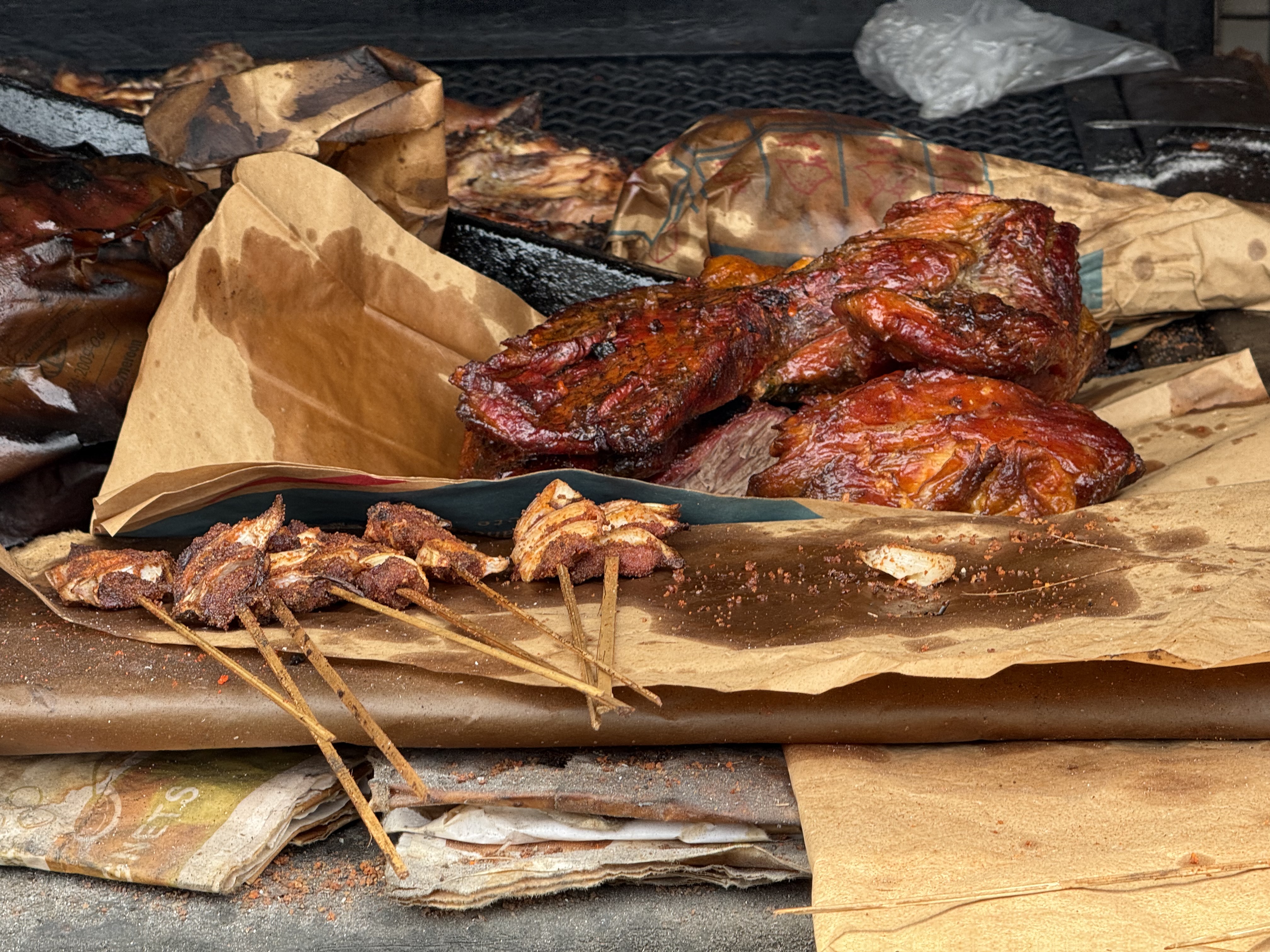Cameroon, often called "Africa in Miniature," is a culinary treasure trove shaped by over 250 ethnic groups and a blend of indigenous, French, and British influences. From bustling Yaoundé markets to serene Bamenda villages, its food scene bursts with vibrant flavours, featuring starchy staples like cassava, yams, and plantains, enriched with palm oil, bold spices, and fresh seafood. Whether it’s smoky street eats or hearty family stews, Cameroonian cuisine is a surprisingly diverse and unique cuisine in a continent which normally isn’t known for its food.
Ndolé
Considered Cameroon’s unofficial national dish, ndolé is a rich stew from the Douala region. It combines bitterleaf greens (ndolé) with ground peanuts, crayfish, and a protein like beef, goat, or smoked fish. The bitter greens are tamed by the nutty, creamy sauce, creating a complex flavour profile. Served with boiled plantains or bobolo (fermented cassava sticks), it’s a labour-intensive dish often prepared for celebrations like weddings, embodying Cameroon’s love for bold, balanced flavours.
Poulet DG (Director General Chicken)
This vibrant dish, born in the 1980s, is named after wealthy executives who could afford its premium ingredients. Poulet DG features fried chicken chunks stir-fried with bell peppers, carrots, onions, and fried plantain slices in a spicy tomato sauce, seasoned with Maggi stock cubes and Scotch bonnet peppers. Easy to prepare yet indulgent, it’s served with rice or fufu (pounded cassava or yam) and is a restaurant favourite
Porc Grilllé (Grilled Pork)
Possibly the most famous Cameroonian street-food, and definitely the tastiest, porc grillé is Cameroon’s go-to for parties, weddings, and football match gatherings. Pork shoulder or ribs are cubed, marinated in a fiery blend of ginger-garlic paste, njangsa (a nutty African seed), African nutmeg (ehuru), bouillon cubes, and Scotch bonnet peppers, then skewered and charred over open coals. The result is crispy, smoky, and juicy, with a spicy umami kick. Often paired with fried plantains and a cold beer, it’s a crowd-pleaser in Douala’s bustling markets.
Sese Plantains
A coastal favorite, this one-pot dish features unripe plantains boiled, peeled, and “turned” (stirred) in red palm oil with dried fish, prawns, crayfish, and spices like uziza leaves and Scotch bonnets. The plantains absorb the rich, fishy flavors, emerging soft yet firm. It’s a quick, hearty meal that’s vegan-adaptable by skipping the seafood, making it a versatile option.
Plantain Tapé Tapé
These crispy, twice-fried green plantain patties are a beloved snack or breakfast item. Unripe plantains are sliced, fried, smashed flat, and fried again, then seasoned with salt and chili. Similar to Latin American tostones but with Cameroon’s peppery flair, they’re perfect with a spicy dip or as a bar snack.
Kondres
A comforting dish of stewed plantains with beef or goat in a spicy tomato sauce, Kondres is quick to prepare and deeply satisfying. The ripe plantains add a subtle sweetness that balances the heat of Scotch bonnets, making it a popular home-cooked meal or street food side dish.
Ekwang
From the Grasslands of Cameroon, Ekwang is a labour of love. Grated cocoyam (taro root) is wrapped in banana or cocoyam leaves with smoked fish and prawns, then steamed in palm oil. The result is earthy and tender, often paired with spicy eru soup for a complete meal.
Mbongo Tchobi
This dramatic black stew, coloured by roasted mbongo spice (a fermented blend of iru and alligator pepper), is a coastal specialty. Fresh fish is simmered in this bold, funky sauce and served over steamed plantains. It’s not for everyone, but its unique flavour converts adventurous eaters with one bite.
Eru Soup
A slimy, gluggy soup from the Southwest, Eru is made from pounded eru (okok) leaves cooked with palm oil, beef, and periwinkles. Paired with water fufu (a light cassava paste), it’s a communal dish that sparks debate. Some love its texture, while others find it off-putting, but it’s a cultural cornerstone.
Achu Soup
Known as yellow soup, this tangy, palm oil-thickened broth from the Northwest is served with cocoyam fufu. Its slimy texture is divisive, but the bright flavours of local spices make it a regional favourite, often enjoyed at family gatherings.
Cameroon’s cuisine is more than food—it’s a cultural tapestry woven from local ingredients and shared traditions. Dishes like fufu tie it to West African roots, while French-inspired puff puff (sweet doughnuts) and British-style meat pies add global flair. Palm oil’s reddish hue symbolizes abundance, and communal pots foster connection. What dish are you craving? Come and join us in Cameroon to try these dishes and many more.
Check out our
Cameroon tours here
on our website for our upcoming tour dates. Check out the other
African destinations
we have as well which go great in combination with Cameroon!
You can also check out our Cameroon destination guide , which has useful information on what to expect when travelling to the country.



